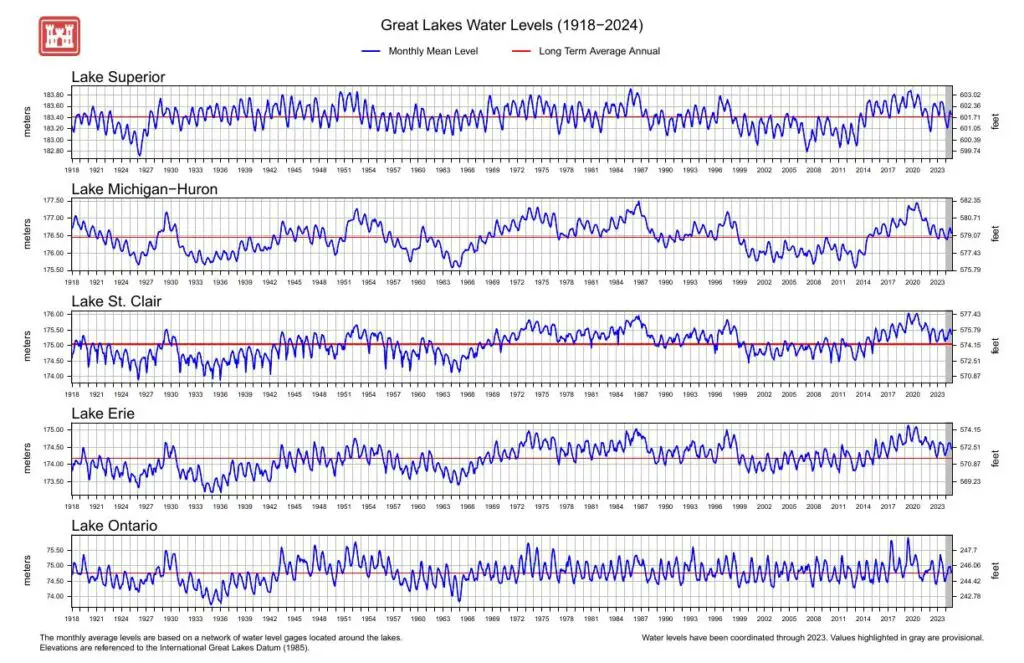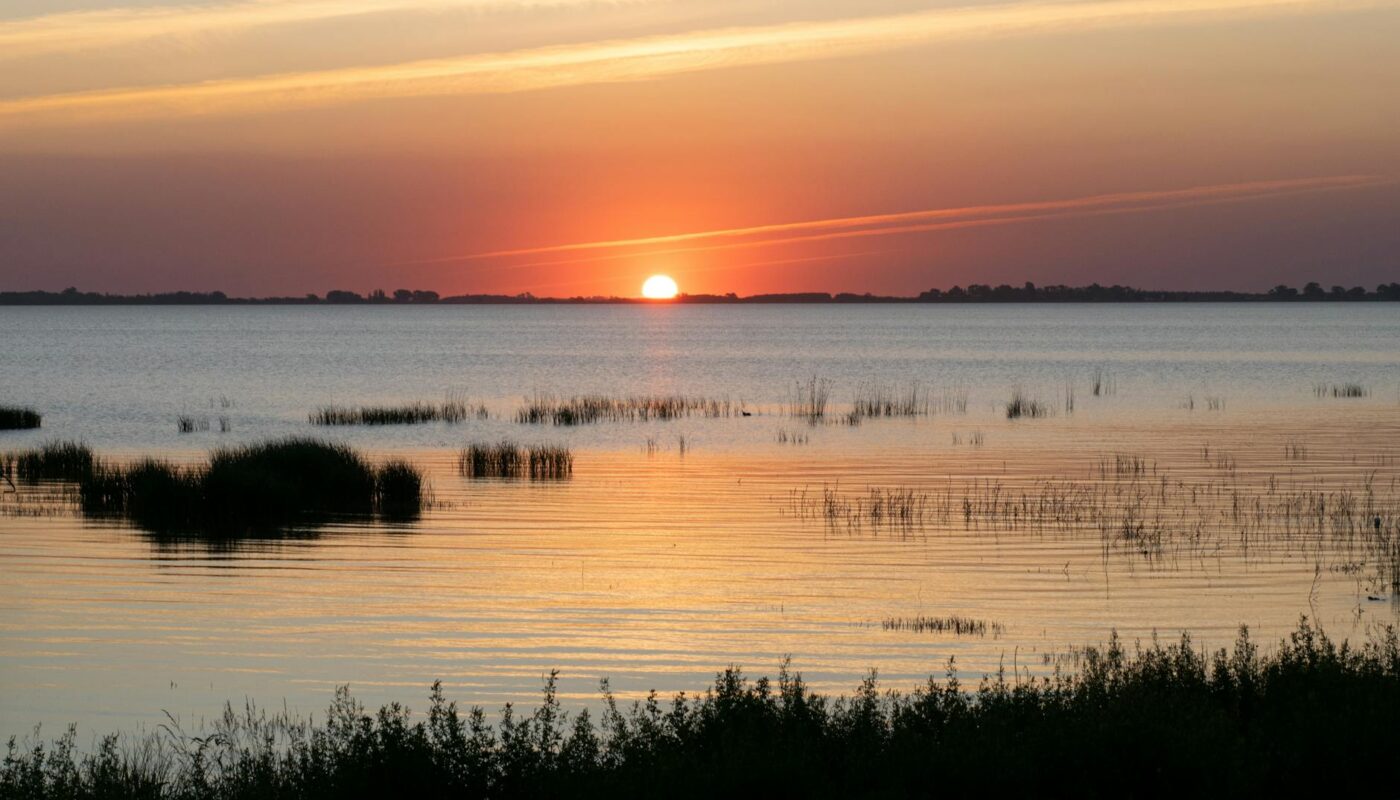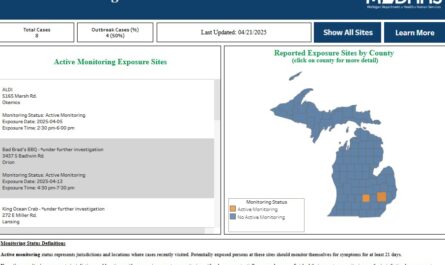The Great Lakes basin experiences above-average warmth, contributing to forecasted water level drops across most lakes as the region enters its seasonal decline.
Above-Average Temperatures and Precipitation Forecast

The Great Lakes basin has experienced temperatures up to 10°F above seasonal averages, impacting water levels and seasonal forecasts. Despite recent dry conditions, meteorologists predict a shift with wet weather bringing between 1 to 2.5 inches of rainfall from Sunday to Tuesday as a storm system moves in from the southwest. This precipitation will be followed by drier conditions, maintaining fluctuating water levels across the region.
Current Water Levels and Projections
As of November 1, Great Lakes water levels showed significant variability compared to last month and last year. Lakes Superior, Michigan-Huron, and Ontario are positioned below their long-term November averages, at 6, 2, and 2 inches lower, respectively. However, Lakes St. Clair and Erie remain above their November average by 5 and 8 inches.
The U.S. Army Corps of Engineers projects continued declines into December:
- Lakes Superior, Michigan-Huron, and St. Clair are forecasted to drop by approximately 2 inches.
- Lake Erie is expected to fall by 4 inches.
- Lake Ontario may see a modest 1-inch decline.
Outflow and Navigational Implications
Outflow conditions reflect these water level trends:
- Lake Superior’s outflow to the St. Marys River will be below average for November.
- Lake Michigan-Huron and Lake St. Clair’s outflows are expected to be slightly above average, aiding downstream water bodies.
- Lake Erie’s discharge into the Niagara River and Lake Ontario’s flow from the St. Lawrence River are also forecasted to remain above average.
Mariners and regional stakeholders are advised to monitor navigational charts and current water level data to adjust plans accordingly.
Broader Context and Seasonal Trends
The ongoing decrease is part of the seasonal decline pattern typical for the Great Lakes. These fluctuations are influenced by both long-term climate cycles and shorter-term weather patterns, impacting the region’s water balance. Despite above-average warmth boosting short-term evaporation, the incoming storm system may temporarily counteract declines with substantial rainfall.
Great Lakes users, from commercial shippers to recreational boaters, should stay informed through reliable sources such as the Detroit District Corps of Engineers and NOAA for current updates and advisories.
Find More Interesting Feature Stories From ThumbWind Publications
Michigan Stories
Unveiling the people, places, and events that make the Great Lake State unique, we’ll explore hidden gems and must-do activities.
Weird Political News
A sarcastic and insightful take on official news released by government sources, Political Action Committees, and Public Officials from all over the US. All stories are true and sourced.
ThumbWind News
News and events of Michigan’s Upper Thumb that are worth knowing in the region.
Your Turn – Like This, or Hate it – We Want To Hear From You
Please offer an insightful and thoughtful comment. Idiotic, profane, or threatening comments are eliminated without remorse. Consider sharing this story. Follow us to have other feature stories fill up your Newsbreak feed from ThumbWind Publications.




